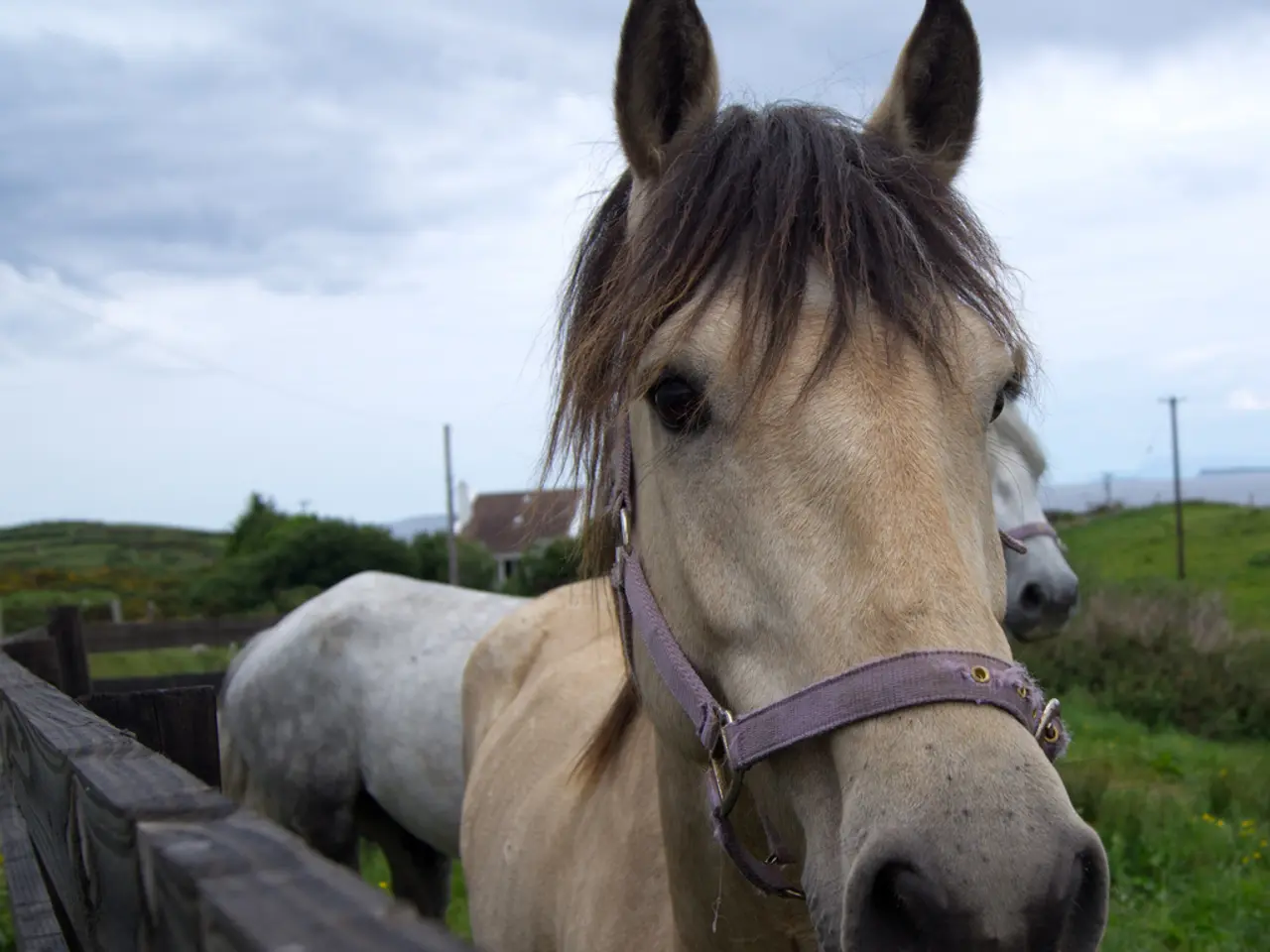Soaring Wild Horse Numbers in America: What Are the Consequences for the Ecosystem?
=============================================================================================
In the vast, parched landscapes of the American West, a centuries-old symbol of freedom and wilderness now faces a modern-day dilemma. The overpopulation of wild horses, once revered as a symbol of the American West, is causing environmental havoc and straining resources, leading to a contentious debate about their management.
The Bureau of Land Management (BLM) is tasked with the management of these wild horses, as outlined by the Wild Free-Roaming Horses and Burros Act, which was passed in 1971. However, the BLM's efforts to maintain the Appropriate Management Level (AML), approximately 30,000, have been challenged by the current wild horse population of 90,000, with an additional 50,000 in captivity.
The management of these wild horses comes at a significant cost to taxpayers, with an estimated $100 million spent annually on their care. Yet, many solutions, such as fertility treatments, aren't feasible or cost-effective on a large scale.
Jess Oldham, who helps run the Wind River Wild Horse Sanctuary, has been dedicated to the cause since 2016. The sanctuary, unique in that it sits on Native land, was founded in 1988. Oldham suggests that finding a compromise may be the key to finding a solution to the wild horse management issue.
The overpopulation of wild horses is not just a numbers game. These animals, in addition to cattle and other livestock, can cause significant environmental changes, affecting plant community structure, composition, and diversity. Horses pull grass and plants out by the root, making it take two seasons for that foliage to regenerate. Moreover, horses need 5 to 10 gallons of water a day to survive, and a large number of horses can drink water faster than a spring can produce it.
The current "megadrought" in the American West has exacerbated these issues, leading to water rationing in some areas. Wild horses, once a symbol of the American West, are now contributing to the drought conditions due to their overpopulation.
The Wind River Wild Horse Sanctuary, along with groups like the American Wild Horse Campaign, advocate for keeping horses wild and oppose practices like helicopter roundups. However, the BLM is required by law to mitigate wild horse populations so they don't exceed the AML. The roundup processes, while controversial, are often necessary to prevent further environmental damage.
Despite the challenges, Oldham remains hopeful. "The road ahead in addressing the overpopulation of wild horses is challenging, with no quick fix in sight for an ever-mounting problem," he says. "But I believe that with compromise and understanding, we can find a solution that respects the wild horses, the land, and the people who call this region home."
The overpopulation of wild horses in the American West is a complex issue with no easy answers. As the debate continues, it's clear that finding a balance between the preservation of these iconic animals and the conservation of the land they inhabit will be crucial.
Read also:
- Understanding Hemorrhagic Gastroenteritis: Key Facts
- Stopping Osteoporosis Treatment: Timeline Considerations
- Tobacco industry's suggested changes on a legislative modification are disregarded by health journalists
- Expanded Community Health Involvement by CK Birla Hospitals, Jaipur, Maintained Through Consistent Outreach Programs Across Rajasthan








